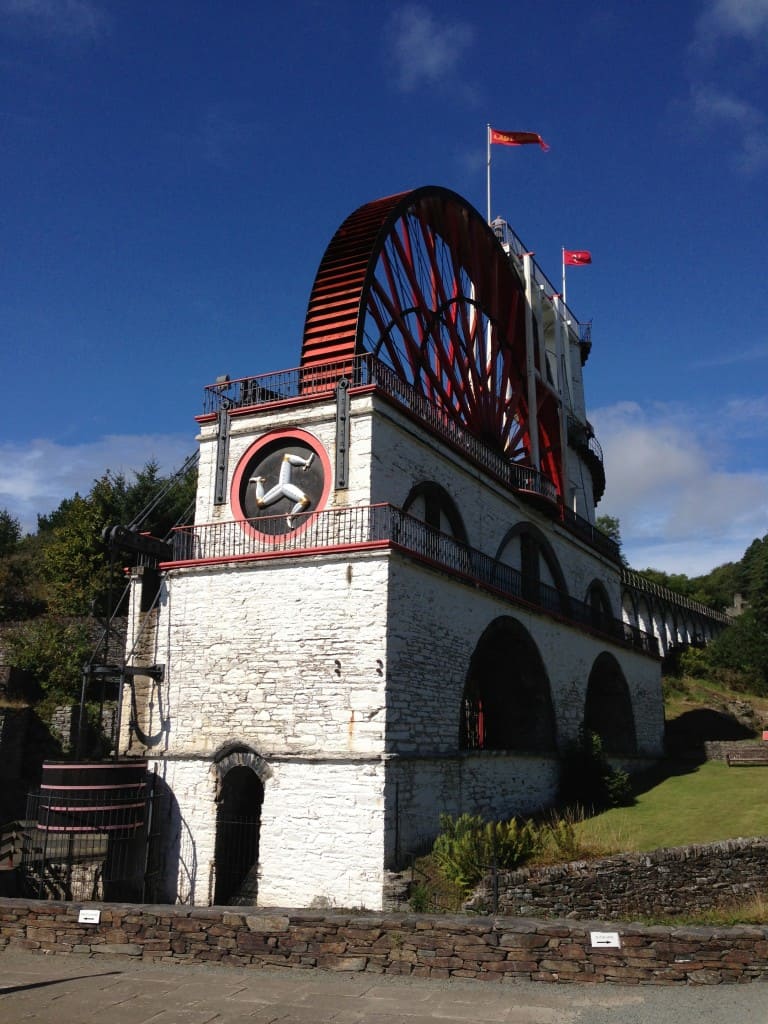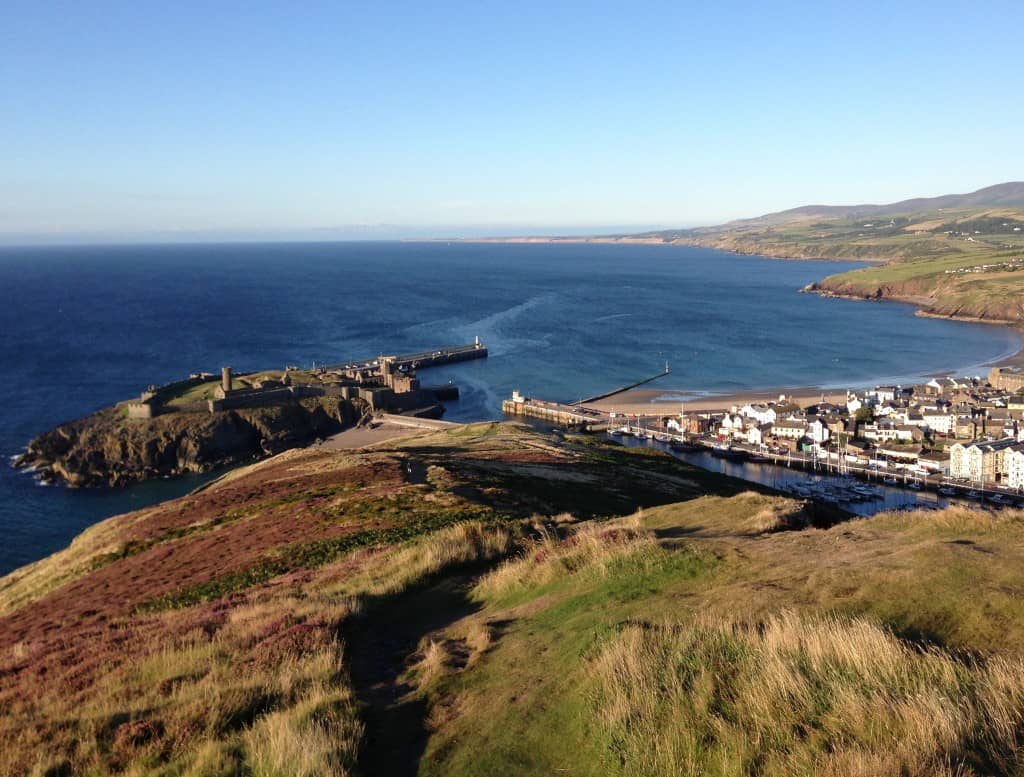After the departure of the grandchildren, the very fine weather over the August bank holiday was no good for sailing, so we stayed put in Conwy for another four days until we got a favourable wind. This paid off, for we had an excellent passage sixty miles north to the Isle of Man.
 The Isle of Man is not part of Great Britain but a crown dependency with its own parliament (after 1000 years the oldest in the world), its own laws and customs and its own Manx language. We put in to the capital Douglas, which turns out to be a very pleasant and lively town, once a hugely popular Victorian resort with an impressively long promenade, along which run horse-drawn trams. It is all go here, especially as it was the last days of the Isle of Man TT (motor cycling racing), which regularly takes place on some of the island’s roads.
The Isle of Man is not part of Great Britain but a crown dependency with its own parliament (after 1000 years the oldest in the world), its own laws and customs and its own Manx language. We put in to the capital Douglas, which turns out to be a very pleasant and lively town, once a hugely popular Victorian resort with an impressively long promenade, along which run horse-drawn trams. It is all go here, especially as it was the last days of the Isle of Man TT (motor cycling racing), which regularly takes place on some of the island’s roads.
 The Isle of Man has some great railways. The steam railway was the inspiration and model for the Rev. W Awdry’s ‘Thomas the tank engine’ stories. Indeed, the trains and stations turn out to look just as in the books. We took the steam train to the south of the island to visit Castletown, the former capital. It is a very pleasant town and harbour, dominated by Castle Rushen in its centre. This magnificent castle is remarkably complete and, in several of the rooms, tableaux have been created of its former inhabitants at table etc.
The Isle of Man has some great railways. The steam railway was the inspiration and model for the Rev. W Awdry’s ‘Thomas the tank engine’ stories. Indeed, the trains and stations turn out to look just as in the books. We took the steam train to the south of the island to visit Castletown, the former capital. It is a very pleasant town and harbour, dominated by Castle Rushen in its centre. This magnificent castle is remarkably complete and, in several of the rooms, tableaux have been created of its former inhabitants at table etc.
Tony spent two days in the Manx Museum library researching details of Captain Edward Voss and his wife, who retired to Castletown to be near their daughter Elizabeth, whose husband Edward Ferrier had been appointed Government Chaplain in Castletown. Elizabeth bore fourteen children (!) before expiring. We visited Malew parish church outside Castletown and found Captain Voss’ grave and that of Edward Ferrier and his second wife. We also found the house where the Vosses lived and the large house where Edward and Elizabeth raised their family, as well as the house where Edward lived with his second wife.
On Monday we took the Electric Tram northwards along the high coast to Laxey, where we changed onto the Snaefell Mountain tram, which took us to the summit of Sneefell (2023′ or 617m). It is said that from the summit you can see seven kingdoms: Man, Scotland, England, Wales, Ireland, heaven and Neptune’s realm. Sadly for us the very summit was covered in mist while we were there.
 Locals would say it was cloaked by Manannan, the Celtic sea god from whom the island derives its name and who was said to cloak the island in mist to protect it from invaders. On our visit he had not so much cloaked it as provided a toupee.
Locals would say it was cloaked by Manannan, the Celtic sea god from whom the island derives its name and who was said to cloak the island in mist to protect it from invaders. On our visit he had not so much cloaked it as provided a toupee.
During our return we visited the Laxey Wheel. This is a vast water wheel built in 1854 to pump water from the Laxey mines. It is claimed to be the largest working water wheel in the world, and is certainly very impressive, both in size and engineering. It drives an oscillating shaft, which transfers the power several hundred meters up the hill to the mine shafts from whence water was pumped it.
It not only carried out this function but became a major Victorian visitor attraction and a whole tourist industry developed around it with hotels and tea shops, etc. – a legacy that continues to this day.
 On Tuesday we travelled by bus across to Peel on the west coast. Peel is said to have been the earliest settled part and to have the strongest Manx culture. It certainly has a slower quieter pace than Douglas. It has a magnificent castle, which we took many hours to explore and an extensive museum presenting the history of Man through the ages.
On Tuesday we travelled by bus across to Peel on the west coast. Peel is said to have been the earliest settled part and to have the strongest Manx culture. It certainly has a slower quieter pace than Douglas. It has a magnificent castle, which we took many hours to explore and an extensive museum presenting the history of Man through the ages.
From here we will be sailing via Workington for Maryport on the Cumbrian coast of England, where we will be laying up Antipole until next season.
